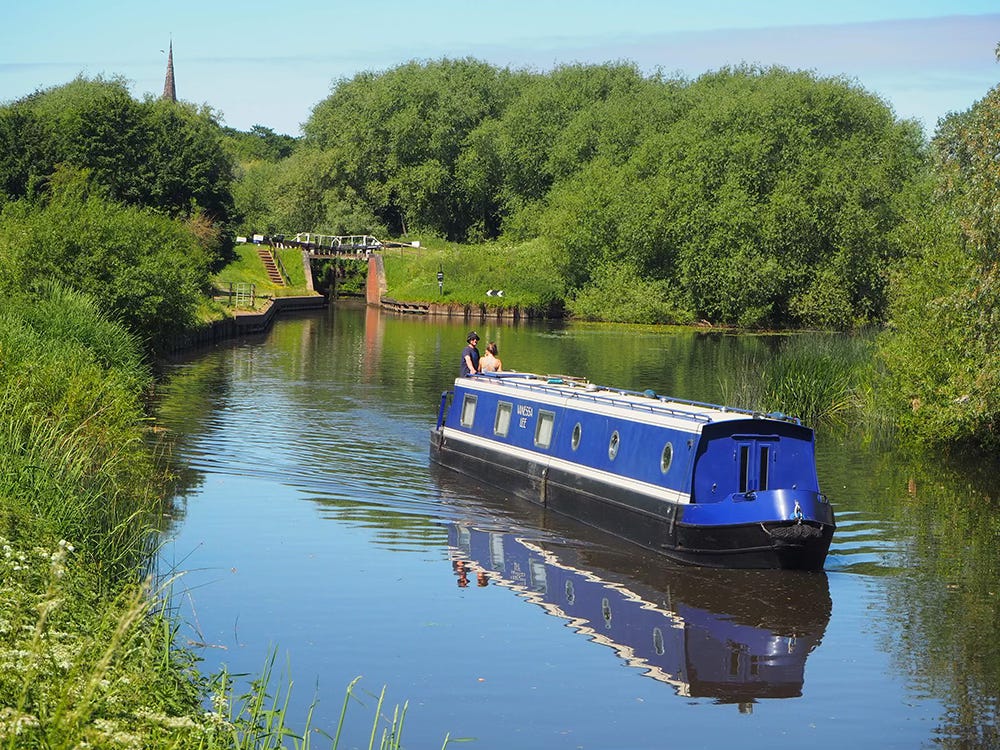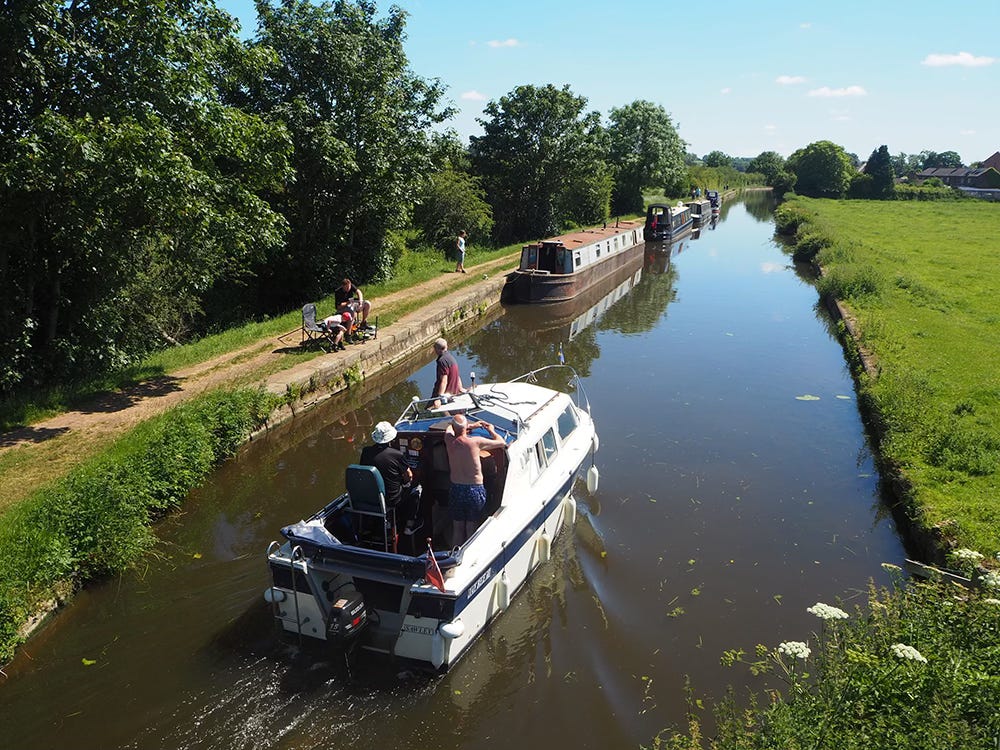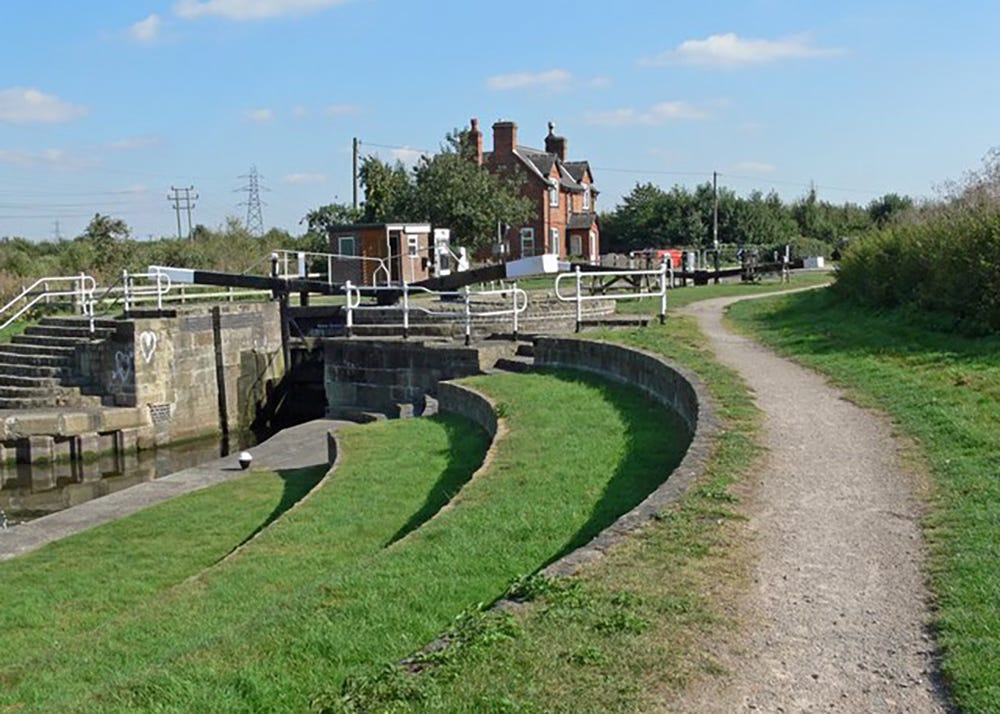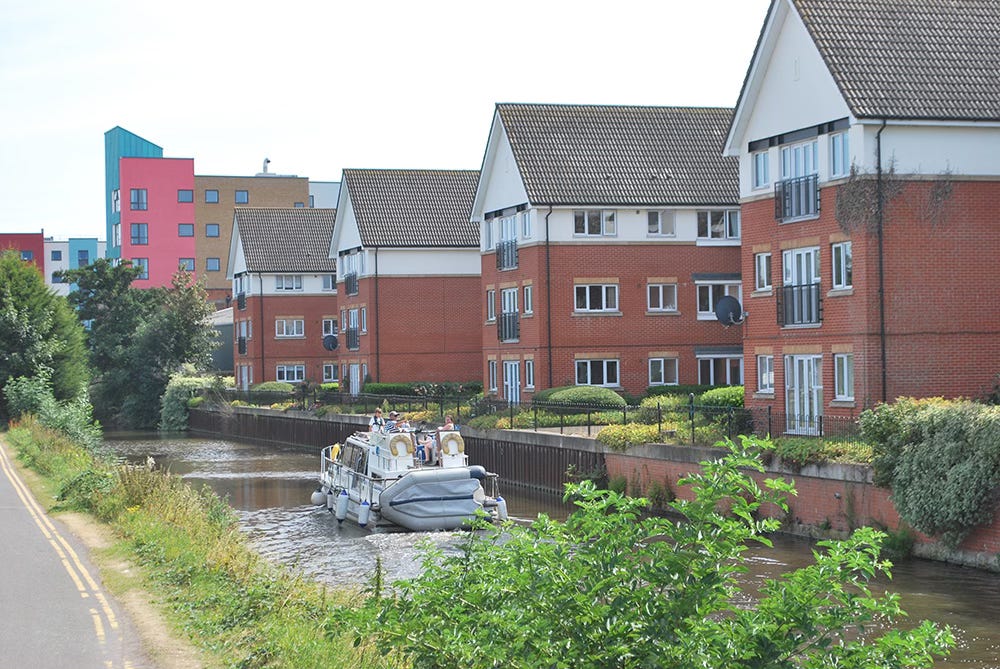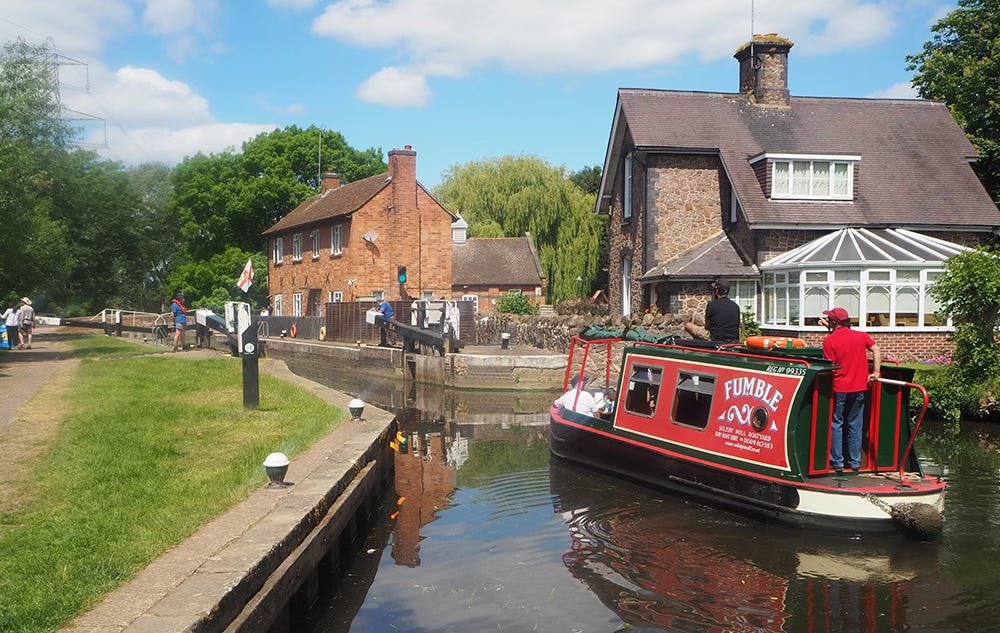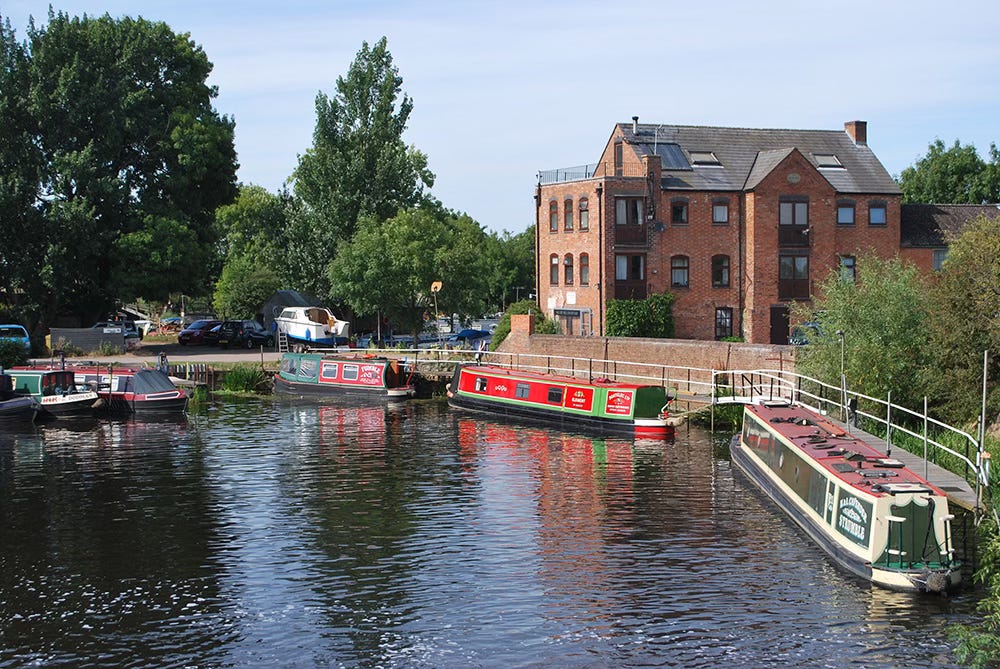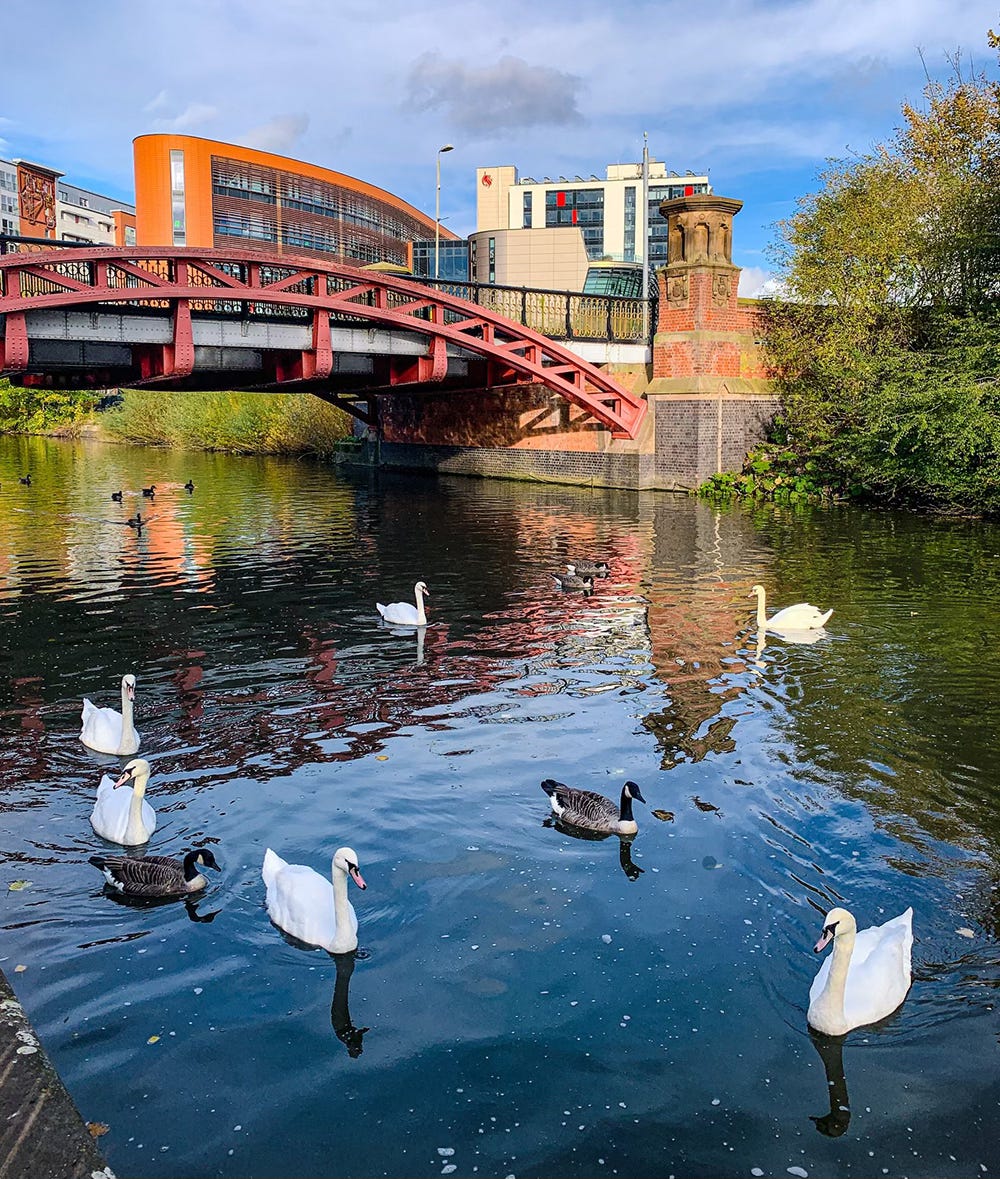A route that's perfect for summer boating
Following the River Soar is a delightful journey through quiet countryside, leading to the heart of Leicester
A gentle, winding tributary, largely free from unsightly flood defences, and well supplied with moorings and attractive villages, the Soar can perhaps be considered Leicestershire’s answer to the River Avon.
For 25 miles from Trent Lock to Leicester, it traces a green, rural route alongside low-lying farmland, water meadows, gorgeous woodland and former gravel pits. Aside from taking in the occasional pretty village and the university town of Loughborough, it keeps its distance from settlements until working its way into the heart of the bustling city of Leicester.
Despite its connection (both historical and physical) to the Grand Union Canal, this is firmly a river navigation, with only two canal sections of any length at Loughborough and Syston.
Historically, the Soar has flooded at the drop of a hat, but unlike (say) the Severn with its high flood banks, the approach taken here is to let it inundate the water meadows that are such a distinctive feature of the river. Good news for the summer boater who enjoys pleasant views.
Trent Lock to Loughborough Basin
Distance 9 miles, 7 locks Cruising time 5 hoursFor much of this first stretch, the Soar follows a winding course through pleasant countryside. Settlements largely keep their distance but Kegworth provides an ideal opportunity for overnight mooring, while Normanton-on-Soar offers a true picture-postcard setting, even if the village is a little difficult to access. It’s the town of Loughborough, though, that forms the focal point of this first section. With good pubs and plentiful shopping opportunities, it provides a welcome interlude on your upstream journey.
The first navigational challenge is Trent Lock, the waterway crossroads where the Soar flows into the River Trent, and where the Erewash Canal and the Trent’s Cranfleet Cut meet. While Thrumpton Weir, just south of the crossroads, is well protected and signposted, still stay alert for Trent Lock has plenty of other boating challenges. Unpowered craft from the sailing club dart across your path, the channel is shallow on the inside of the corner, and when there’s a bit of fresh on the river, the wind funnelling down the valley can make turning difficult and even a little frightening.
Redhill is the first settlement on the river and shows clear evidence of the Soar’s propensity to flood. Even before you get to the flood lock, you’ll note a line of elegant riverside houses and chalets, sheltered by the ‘red hill’ itself – all raised on stilts, or similar, to keep them safely out of harm’s way. Over the hill, the decommissioned Ratcliffe-on-Soar power station has a somewhat dominating presence behind the marina, but perhaps for not much longer, as it is scheduled to be demolished before the end of 2026.
A 90° turn leads into Ratcliffe Lock. An attractive spot despite the presence of the recently widened A453, the lock cut is also convenient for picking up crew with the East Midlands Parkway railway station nearby. Note the filled-in chamber to the side; the locks were reconstructed, and levels adjusted, in a 1980s flood prevention scheme.
The ‘weir stream’ by the flood-lock at Kegworth is full of permanent moorings, but although the bridge provides the only access to the village, the best overnight moorings are above Kegworth Deep Lock. Also known as Kegworth New Lock, the Deep Lock name wins for sheer ‘does what it says on the tin’ value. There are poles in the chamber walls to loop your ropes around, and though the paddles have been neutered in recent years, be careful when locking up.
Above the lock are the finest overnight moorings for miles. Willow trees shield the navigation cut from the natural river, while a well-piled bank makes mooring easy. Don’t expect complete peace, however; delightful though this spot is, it’s also under the flightpath for East Midlands Airport…
Walk back towards the Shallow Lock and turn left on Station Road, then left on Nottingham Road, for the village of Kegworth. With a Co-op, a Boots and a fabulous butchers and bakers, it’s a good place to stock up.
The river winds and widens as it makes its way towards tiny Zouch (pronounced ‘Zutch’ rather than ‘Zoosh’ like the nearby Ashby de la Zouch), and with no bridges for 3 miles, the pub moorings are the only way to visit the Otter Inn on the off-side. The Rose & Crown, too, has its own moorings on the lock cut. The ‘mooring dolphins’ south of Zouch are not as exciting as they might sound, but merely tall emergency mooring posts for use in times of flood: note the hefty weir structure after the bridge.
If only Normanton-on-Soar had moorings! Boaters can gaze upon the much-photographed riverside church; but there is more to see in the village, with half-timbered houses along the green main street. Yet the towpath is once again on the wrong side, so getting ashore is famously difficult. AWCC members can ask at Soar Boating Club for the usual reciprocal arrangement, and there are patrons’ moorings at the Plough Inn gastropub-cum-grill. Consider, instead, mooring on Zouch lock cut and walking down Moor Lane for a mile. Close to the church is a chain-link ferry – one of the few still operating in England – running weekends from April to October.
The River Soar itself discreetly avoids Loughborough, embarking on a long loop to the east. But the navigation heads straight for the town centre, and beyond, with a 4-mile canal section. As industry looms on the banks, Bishop’s Meadow Lock marks the entrance to the town, with a useful sanitary station. Moorings, then low-rise industry, line the canal towards Loughborough Lock (shallower, but not always fast to fill) and the towpath is busy with local walkers and cyclists going about their business.
A 90° turn under the Chain Bridge marks the start of the Leicester Navigation, continuing the Soar through-route. Straight on is Loughborough Basin, a windswept modern square unlikely to challenge Birmingham (or even Banbury or Reading) as a model of canalside development. But liquid salvation lies across the road in the form of the Swan in the Rushes – an ideal place to pause before continuing the cruise to Leicester.
Loughborough to Leicester
Distance: 16 miles, 11 locks Cruising time: 6 hours
The river initially continues to be fairly solitary south of Loughborough, though Barrow-upon-Soar is a bustling centre, while nearby Mountsorrel and Sileby are well worth visiting. Approaching Leicester, the landscape becomes riddled with former gravel workings, which are incorporated into Watermead Country Park. The push into the heart of this newly fashionable East Midlands city makes a fitting finale to your Soar explorations.
The Leicester Navigation enjoys a more rewarding passage through southern Loughborough than the approach from the north. A pleasant riverside park, well-kept bungalows and inoffensive modern housing set the scene. But the real interest is more industrial, less manicured.
As well as canalside warehouses, you’ll see a motley collection of old trains at the Great Central steam railway’s sheds. The preserved line, which runs to the northern outskirts of Leicester, is unusual in its ambition to offer a “main line steam experience”. One day it hopes to run trains across the canal bridge again – and to Nottingham.
The cut continues for another 2 miles after Loughborough. Inconspicuously threading through farmland, its regulation brick bridges make a change from the more ambitious arches of the Soar. This is a lovely place for quiet overnight mooring and it’s no surprise to find a large marina here, just before Pillings Lock.
Barrow-upon-Soar is a bustling boating centre, the busiest since Trent Lock. Keep an eye out under the elegant Soar Bridge for approaching craft: the bridge, pub and lock all come at once, with a 90° turn to make life interesting.
Mountsorrel keeps its distance from the Soar, though its one attractive canalside development graces us with the Waterside Inn. The elegant 1860 railway bridge, with a single span of 90ft, surprisingly carries neither the main line nor the Great Central. It was built for a mere quarry railway, and remains in use for an automated conveyor carrying stone to the railway at Barrow. Beyond the village, the old railway is being restored as a tourist attraction.
Sileby Mill is a rare outpost of hire-boating on the Soar, and a striking, isolated spot in its own right. As you approach the lock, the three-storey mill looks over a pool lined with boats; towpath mooring is easy here.
The large commuter village of Sileby is ½ mile distant along a country lane; when you meet a busier road, follow the footpath across a field to the right, and head for Sileby Maltings. Until the 1920s, the Burton Union brewing system was practised here.
Cossington Lock, again distant from the village, marks the Soar’s temporary abdication in favour of the River Wreake. The owner of Wanlip Hall was unwilling to see the Soar made navigable across his land, which seems a little foolish given that Wanlip is now known locally for its sewage works.
Still, the detour via Junction Lock is one of the most pleasant rural stretches of the Leicester Navigation, and whets the appetite for restoring the rest of the Wreake. For as the navigation turns south at the ‘Old Junction’, the Wreake continues onwards, underneath a cycle bridge. This was once the Melton Mowbray Navigation, a quiet waterway navigable for 15 miles to Melton, now the subject of restoration plans.
The Soar Valley here was once dominated by gravel extraction; indeed, in the 1980s, one of the last regular freight traffics on the Midland waterways took place here. Watermead Country Park now makes good use of the old gravel workings, an expanse of lakes and footpaths on either side of the river, curiously overlooked by a life-size statue of a woolly mammoth. (The remains of a mammoth were found during quarry excavation.) Footbridges grace the locks at Thurmaston and Birstall, both fairly shallow.
Birstall Lock, or the nearby Raynsway Marina, are generally taken as the last recommended moorings before the 4-mile entrance to Leicester. For those with an aversion to urban cruising, you can make this the limit of your Soar cruise and catch the bus into the city.
Leicester is a thriving city full of one-off shops (and a superb market), and the Soar approaches it without ever relapsing into dull suburbia. It winds tortuously to Belgrave Lock, a stone’s throw from the city’s marvellous ‘curry mile’ on Belgrave Road. Here, the river takes off to the west, navigable in theory for a short way – if you avoid the unprotected weir!
Do visit the bulbous National Space Centre here, and the rather more traditional Abbey Pumping Station next door, but do so from the secure moorings in the city centre. Also, the floating mooring by Friary Mill, just south of the weir below Soar Lane Bridge, is worth trying.
West Bridge and Castle Gardens mark the start of the Mile Straight, and the end of the Leicester Navigation. From here, the Leicester & Northamptonshire Union Canal – today also part of the Grand Union – continues through 24 broad locks to Foxton and Market Harborough. But don’t hurry on quite yet; Leicester has much to offer.







